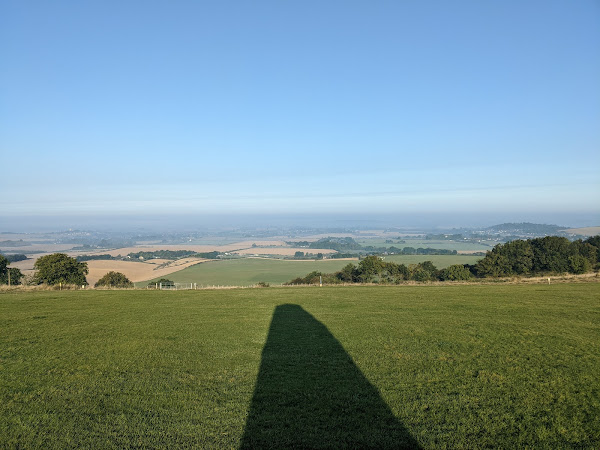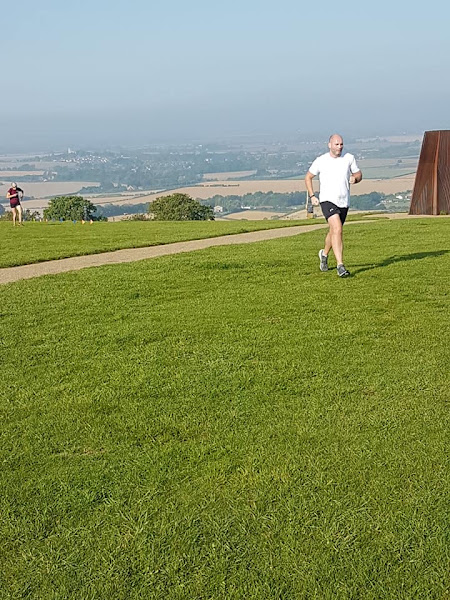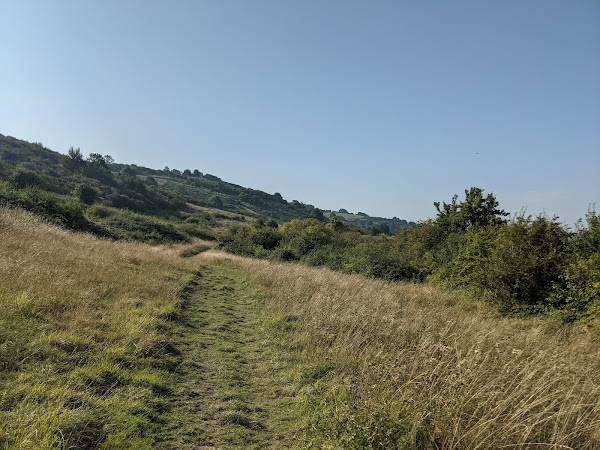There is, surprisingly, only one single "D" event in the East of England, and so today's decision to attend Dunstable Downs parkrun was a relatively straightforward one.
The area
Dunstable Downs is located outside Dunstable, at the northern tip of the Chiltern Hills. Dunstable is situated at the intersection of Watling Street and the Icknield Way - some of the oldest roads in Great Britain.
The Downs forms part of the same escarpment I ran at both Wendover Woods and Tring parkruns. The area is mainly farmland, with a number of smaller woods spread amongst the open meadows.
The course
Given the possibilities for a very lumpy course in the area, the event team at Dunstable Downs parkrun have been extraordinarily generous, and kept the lumps to a relatively mere uneven surface!
The course is run entirely on grass and trail. The route initially traces the outline of the field next to the visitor centre before following the ridgeline to two fields which can sometimes contain sheep, but are otherwise pleasant meadows. Runners follow the perimeter of both fields before retracing their steps back to the finish funnel, situated next to the start line near the visitor centre.
Ample paid parking is available at the several car parks near to the start area, and toilets are available near the visitor centre before the event, while the visitor centre houses a cafe which is available after the event.
The run
It was a foggy start to the morning, and while it did clear somewhat by the start, I had actually been a little worried that it might be a challenge to run today's course if I couldn't see where I was going. Fortunately, it was only a low-lying fog, and the elevation of the downs meant that visibility along the route wasn't a problem by the time we were underway.
The run itself was a pleasant one, and I used the scenery as an excuse to ease off my normal effort, and took the opportunity to just absorb the setting as I ran around.
Thank you to the team for a very pleasant run today, and a special mention to the marshal near the path back into the main site - your encouragement was palpable!
After the run
Following the run, I took the opportunity to explore the site.
Five Knolls barrows mounds
To the north-east of the visitor centre lies the Five Knolls barrows mounds - a series of burial mounds over 4000 years in age.
Following the signposted trail around the barrows and back towards the visitor centre allows you to get a real sense of the beauty of the area up close.
Paragliding centre
For those braver than I, the London Paragliding Centre is located at the foot of the downs, and gliders were regularly being towed skywards throughout the run and through the rest of the time I was in the area.
Whipsnade Tree Cathedral
A short walk along the Icknield Way lies the Whipsnade Tree Cathedral - a collection of trees, bushes, and other greenery arranged in the form of a cathedral.
The tree cathedral had a strong element of seclusion to it - a sharp contrast to the hive of activity I found at the visitor centre upon my return.
\






